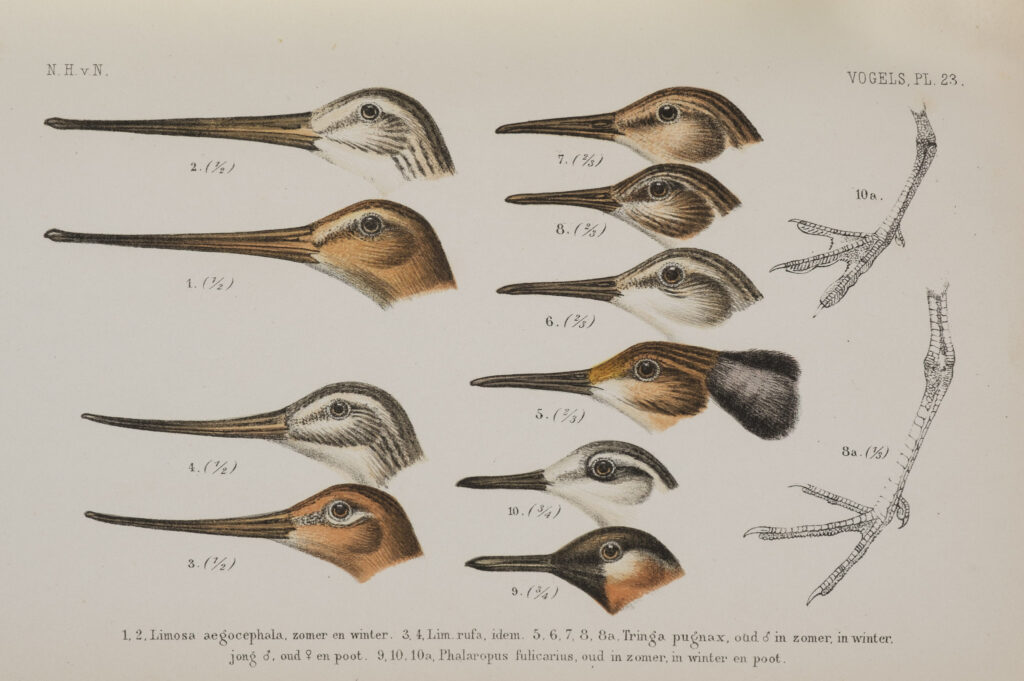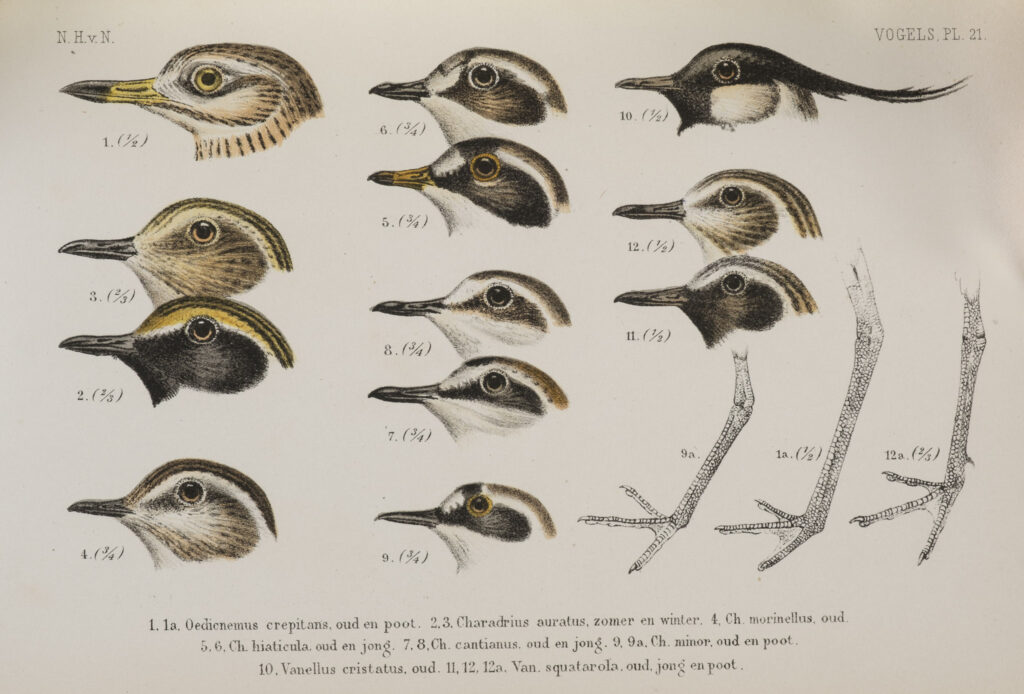De vogels van Nederland
![De vogels van Nederland, Schlegel (Hermann), 1804-1884, Leyden, [pref. 1858] Los deel met beschrijving en twee delen met (ingeplakte) platen.](https://exhibitions.wur.nl/wp-content/uploads/2022/03/O-0007-tafereel-GA-20211103-DSCF1099-bewerkt-2048px-Foto-Guy-Ackermans-1024x688.jpg)
Source: De vogels van Nederland / Hermann Schlegel. The dune habitat with illustrations of bird species such as the stone curlew, crested lark and tawny pipit that are now extremely rare in the Netherlands. (photos in the Schlegel brochure)
From: De vogels van Nederland / H Schlegel, 2e herz. dr in Natuurlijke historie van Nederland, Amsterdam, Funke, 1878.
There is also a second version of this book with separate sheets with description and two sheets with illustrations (pasted in).
Hermann Schlegel’s book also includes a number of plates of different landscape types with the bird species commonly found in each landscape. Whereas Sepp and Nozeman’s description of bird species in Nederlandsche Vogelen was still very human-oriented, Schlegel’s overview of the birds of the Netherlands focussed on the bird in relation to its habitat. His work amounts to a clear description of the state of avifauna in the middle of the 19th century and includes detailed descriptions and drawings of the birds’ habitats. Schlegel has therefore also been described as an ‘ecologist avant la lettre’.
Schlegel saw humans mainly as a threat to birdlife. He was very concerned about the rapid changes occurring in the Dutch landscape as a result of large-scale redevelopment and ongoing industrialisation. These man-made changes to the landscape were (and are still!) mostly detrimental to nature and the plants and animals living in it. Schlegel was saddened by this development, and at one point ruefully wrote:
“We leave it to the reader’s imagination to conclude from these few facts what the state of birdlife must have been like when our country was still sparsely populated and its surface still little changed by engineers and exposed to the incessant elements acting on such a large scale.”
Two of the so-called ‘head pages’ in Schlegel’s De Vogels van Nederland with illustrations of the heads and sometimes also a leg of various bird species. The pages displayed here depict the black-tailed godwit and the stone curlew.

